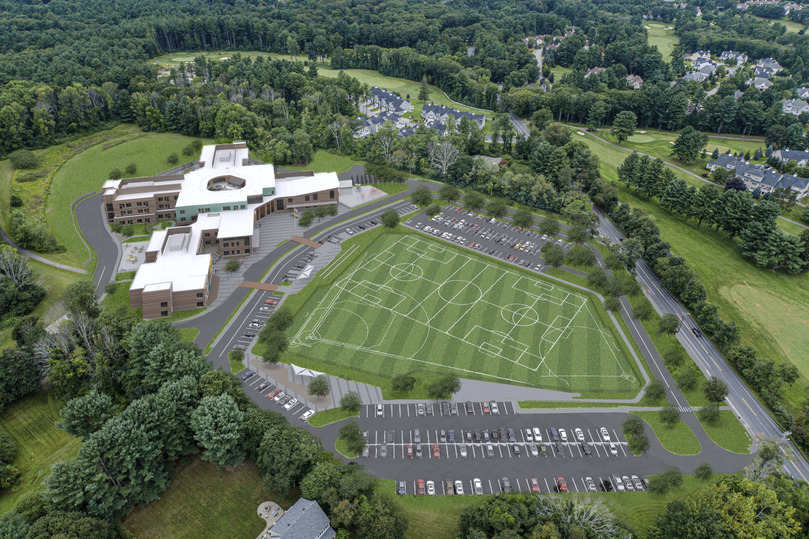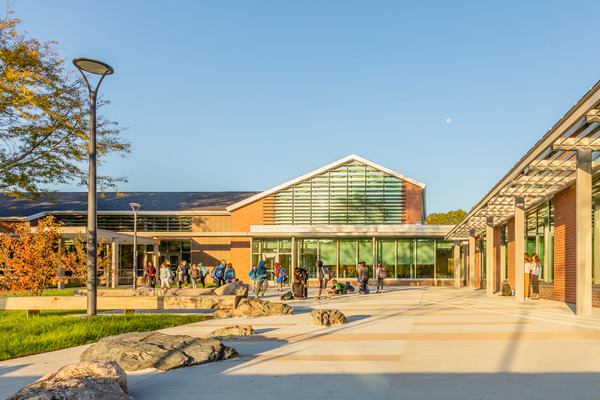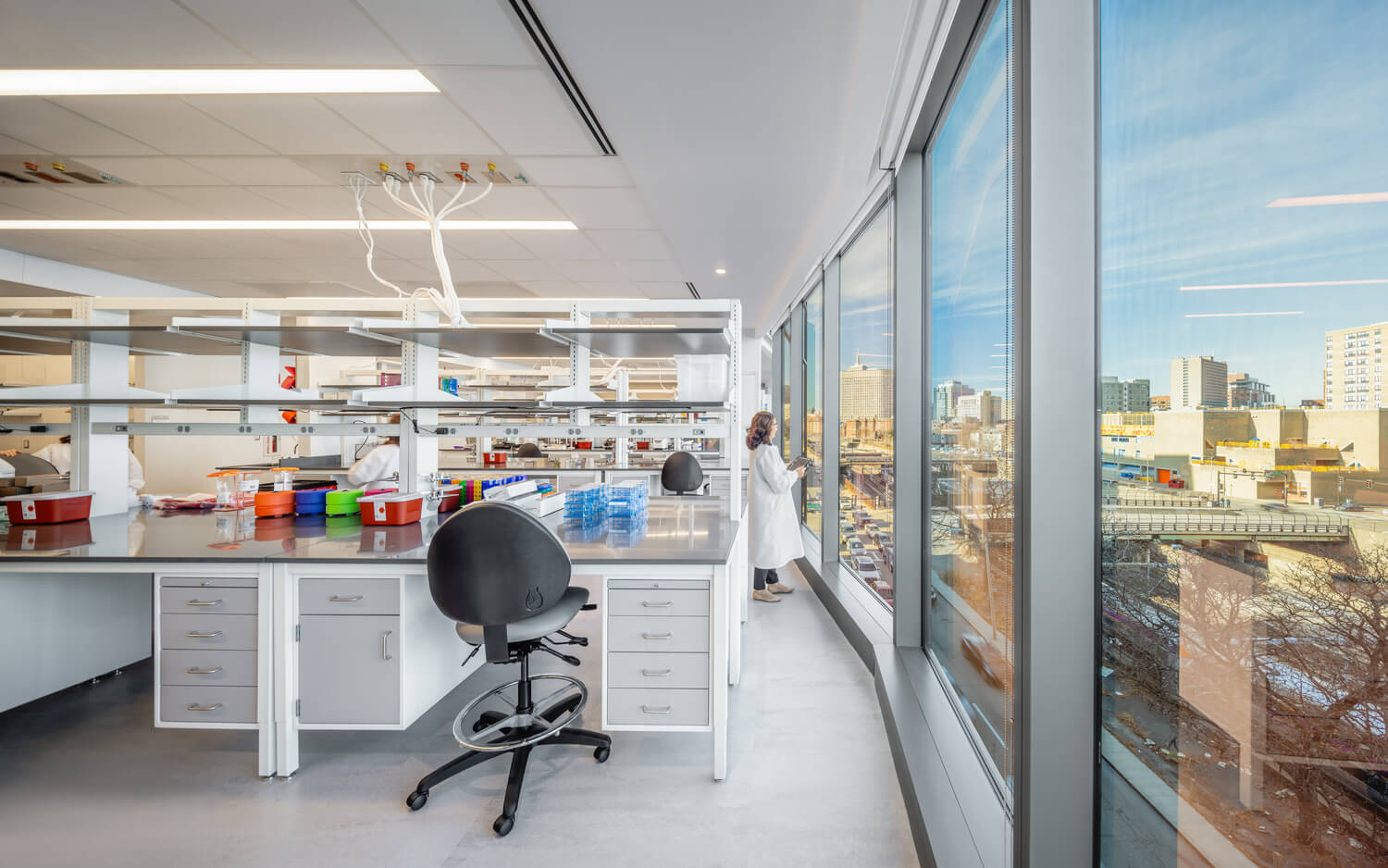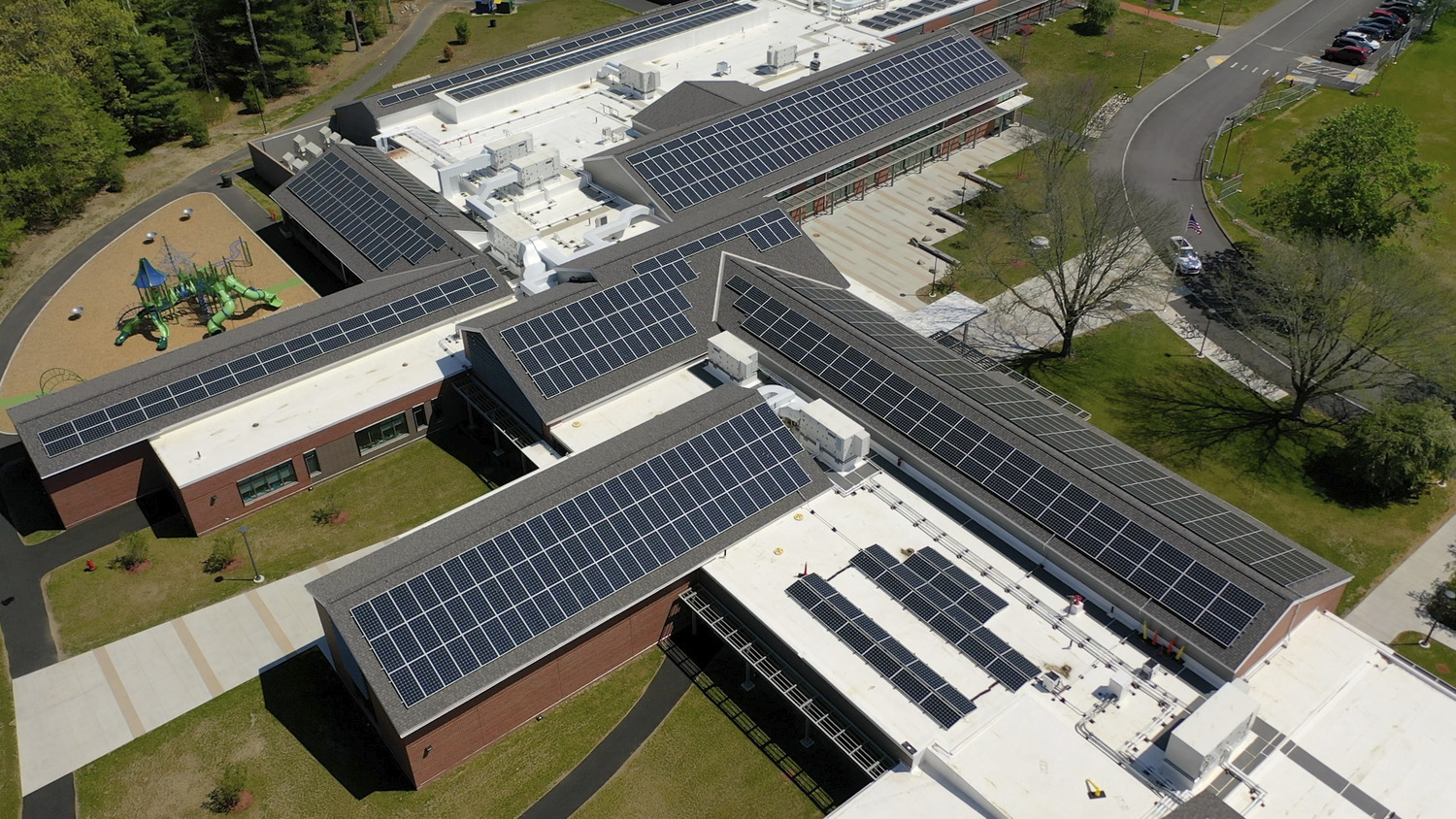
In Massachusetts, many school stakeholders have turned from net zero skeptics to fully-fledged advocates. In 2022 there were around 30 NZE and net zero ready school projects in various stages of design in Massachusetts, including six by SMMA.
A school building qualifies as NZE if it produces as much energy as it consumes (via onsite renewable energy) and does not use any fossil fuels. NZE status can be confirmed by analyzing utility bills and data recorded by the school’s HVAC systems after one year’s use.
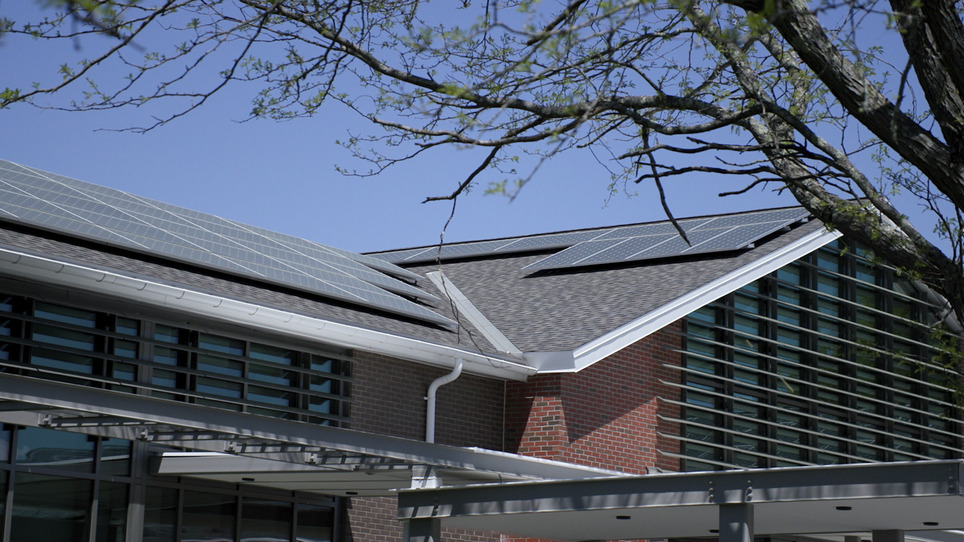
The Lincoln School is the first ever net zero renovation public school in Massachusetts.
Why now?
In Massachusetts, environmental concerns alone do not explain the shift to NZE. Rather, net zero projects have become more affordable and feasible thanks to cheaper renewables, government cash incentives, and advances in sustainable design.
The financial case for NZE is stronger than ever. By using less energy, communities benefit from much lower operational costs over time. Today, for SMMA-designed net zero and net zero ready schools, the average “payback”—cost captured back through energy savings—is between seven and 12 years. Given these schools are designed and built to last at least 50 years, communities can look forward to a minimum of four decades of savings. This performance would not have been possible 10 years ago.
Communities across Massachusetts are taking note. In Concord, MA, we are designing a net zero ready middle school with a predicted payback of just 7.3 years. The Town was swayed by the prospect of the school’s utility bills showing major cost savings from day one. And after breaking even in year seven, the school will enjoy a further 40-50 years of low energy use and costs.

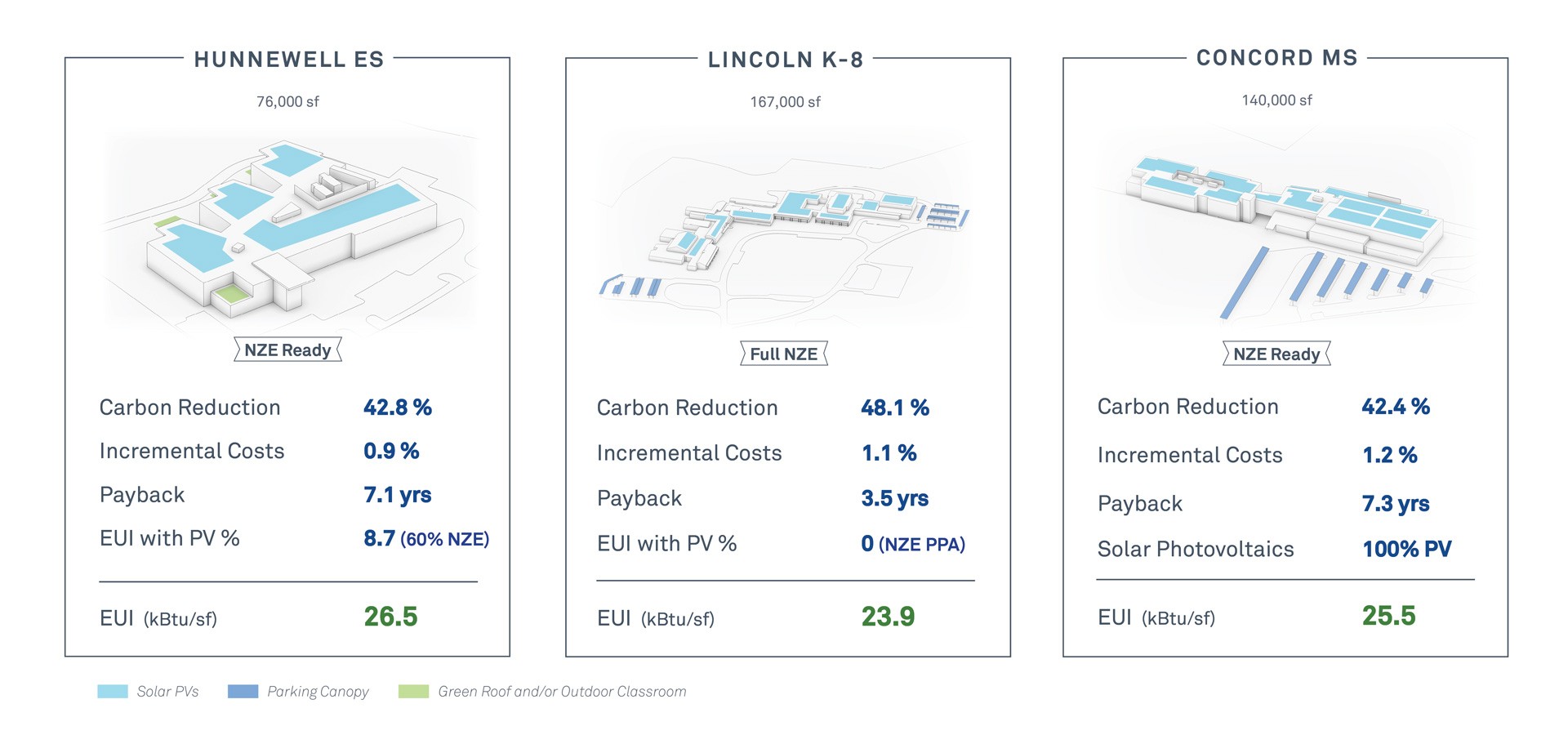
Above: Three of our most recent net zero school designs in Massachusetts. Energy Use Intensity (EUI) is the headline measurement of the energy efficiency of a building's design and/or operation—the lower the better. NZE buildings typically have an EUI below 30.
State-run grant programs have also smoothed the path to more NZE schools. Massachusetts offers financial support for net zero projects through the MassSave Utility Incentive Program, while MassCEC offers a range of clean energy incentives in the form of grants.
When net zero ready is preferable to net zero energy
Many cost-wise communities are opting to build net zero ready schools as opposed to fully-fledged NZE projects (learn about the difference here). In most cases, this means leaving out the cost of solar PV installation from the project budget and entering into a power-purchase agreement (PPA) in which a third party installs, owns, and operates the energy system.
One example is in Andover, MA, where we designed a net zero ready elementary and preschool that opened in 2024. The community will be able to reach full NZE by adding solar panels to the building’s PV-ready roof and installing solar canopies in the parking lot.
Over in Wellesley, MA, the net zero ready Hunnewell Elementary School boasts a solar PV roof that will provide 60% of the required load for NZE.
The climate change factor
Aside from hard-nosed economics, there is also the issue of resiliency. Many towns, cities, and districts in Massachusetts are pushing ahead with climate change readiness plans that include pledges to build more NZE buildings.
One such town is Lincoln, MA, whose full NZE K-8 school features a robust building enclosure designed by SMMA. Aside from being a core net zero strategy, robust enclosures make buildings more resistant to climate change. The Lincoln School now serves as an emergency facility for the town during dangerous weather events.
The case of Babcock Ranch in Florida, where a climate-resilient, 100%-solar powered town made headlines after surviving Hurricane Ian unscathed, vindicates this approach.
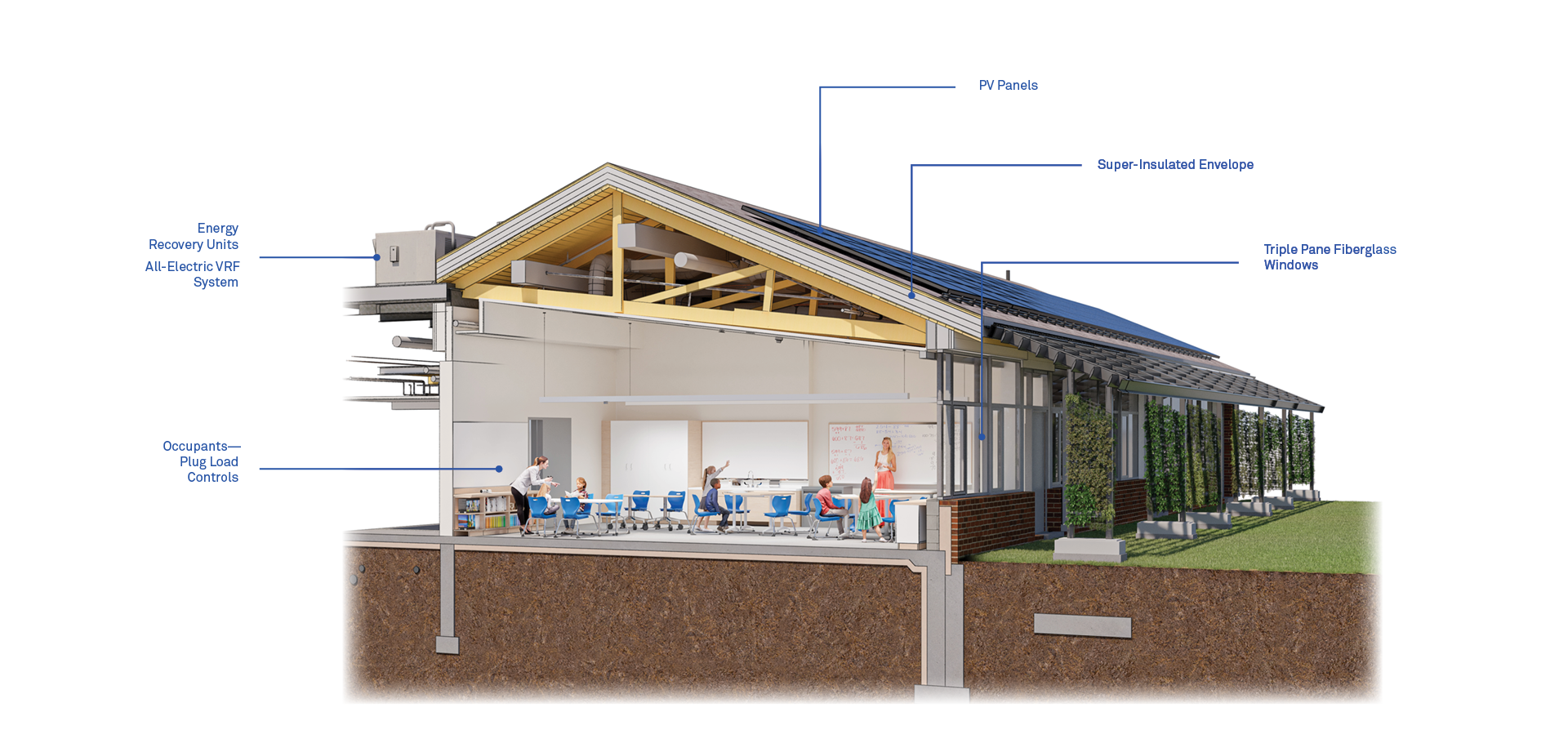
Above: The Lincoln School achieves NZE through a high-performance building enclosure, efficient design choices, and renewable energy.
Back in Concord, the new middle school plans to couple their solar PV system with an energy storage battery system. This will enable the building to access backup power during any power outage caused by a climate event. It will also lift the school’s status from net zero ready to full NZE.
Net zero is the “new normal”
Once a mere aspiration, NZE buildings are fast becoming the norm. The march toward NZE and carbon neutrality is happening on a global scale. At the COP26 Summit, major polluters such as the U.S., Canada, China, and the E.U. announced plans to reach carbon neutrality by 2050.
Closer to home, the City of Boston announced that all newly constructed buildings over 20,000 square feet must meet net zero energy targets as part of zoning laws. Massachusetts recently codified its own carbon neutral 2050 pledge into law, with several municipalities following suit. And at SMMA, our Sustainability practice has committed to the goal of designing all our projects for net zero energy by 2030 in line with the AIA 2030 Challenge.

